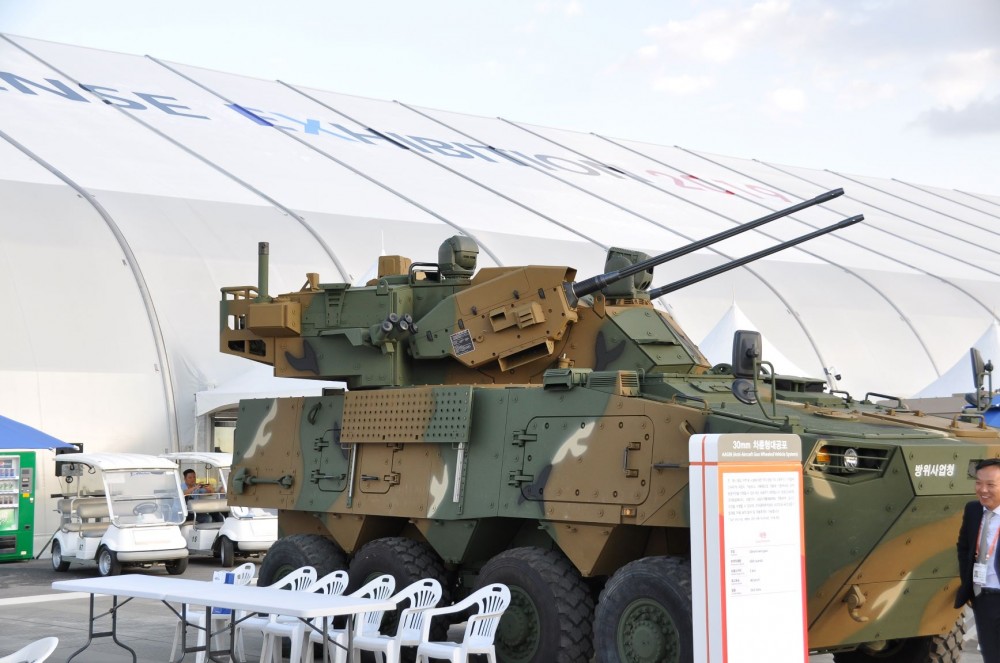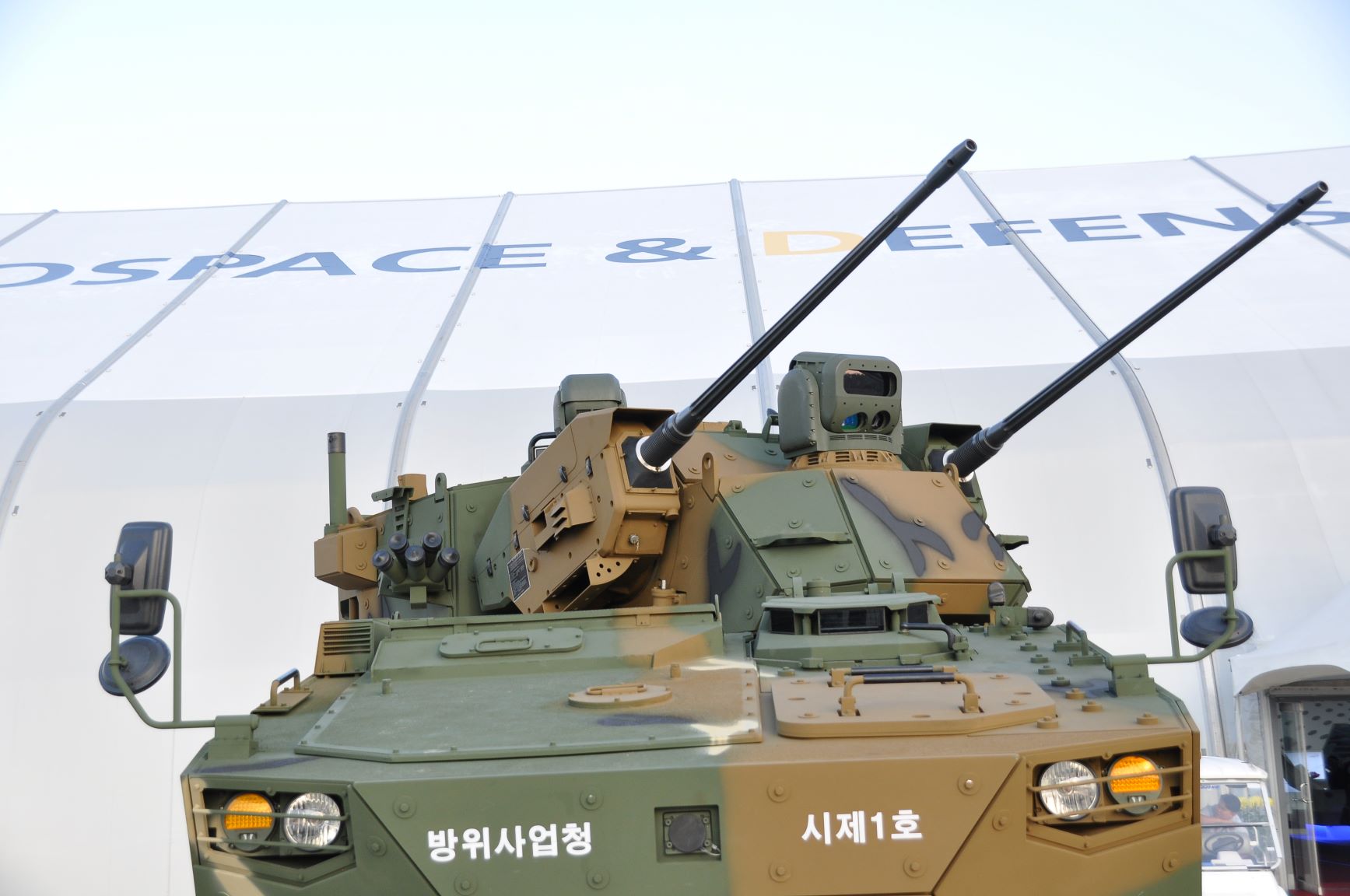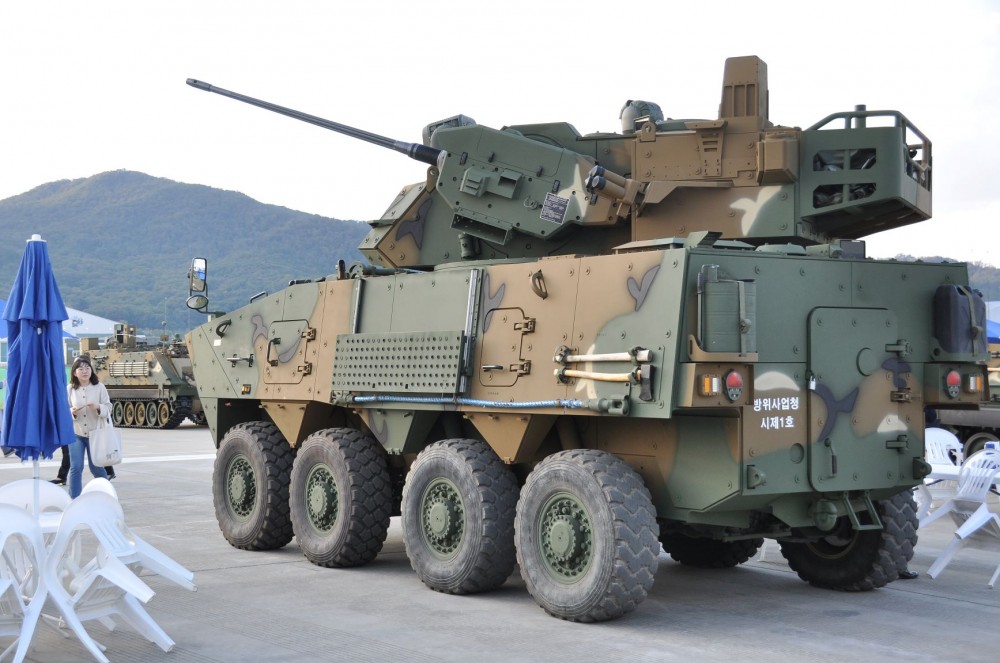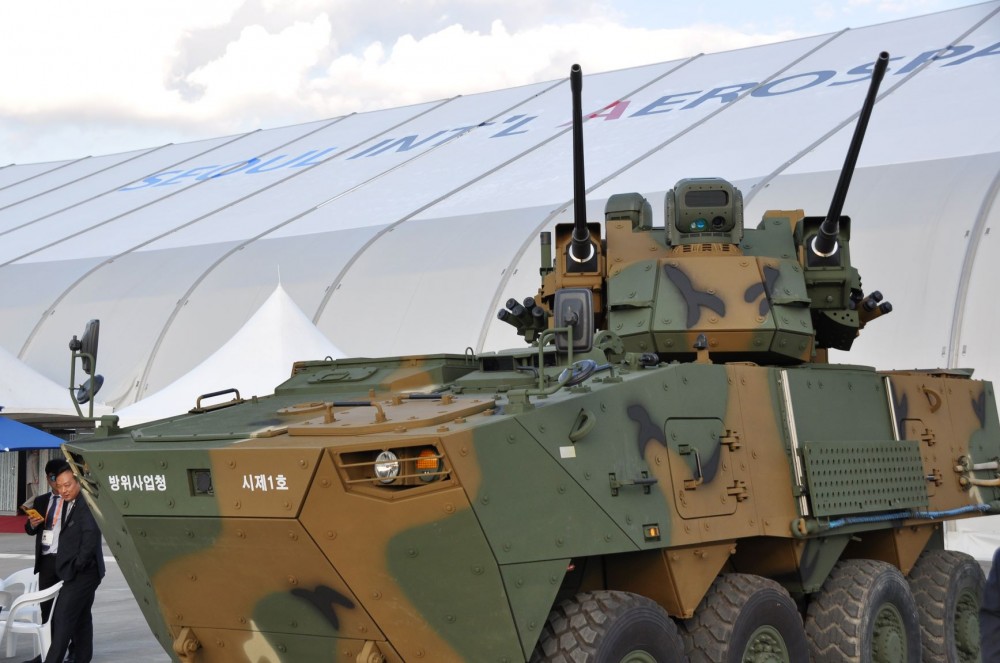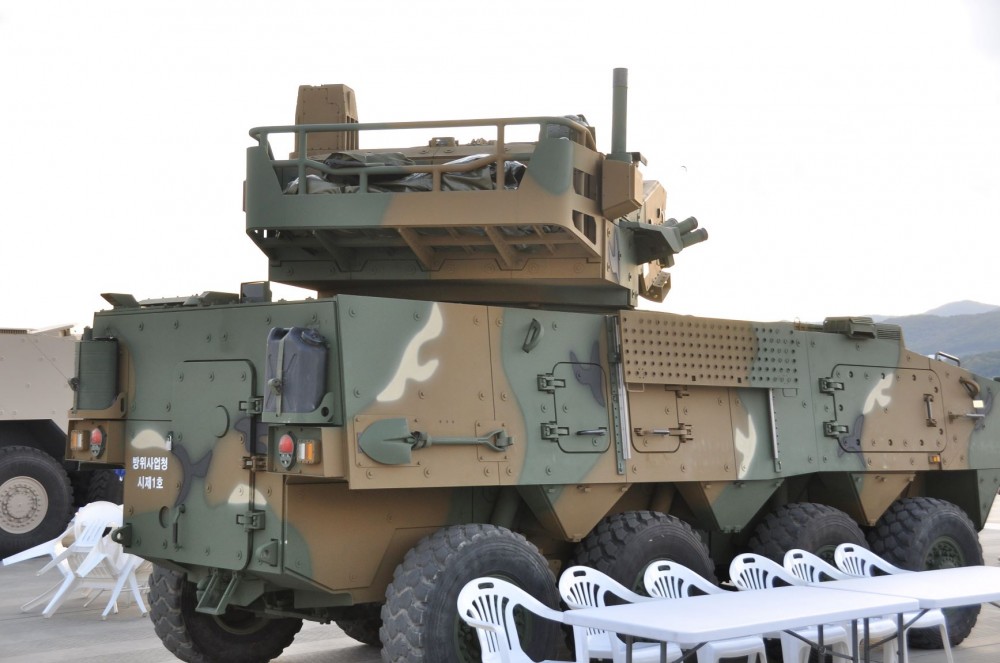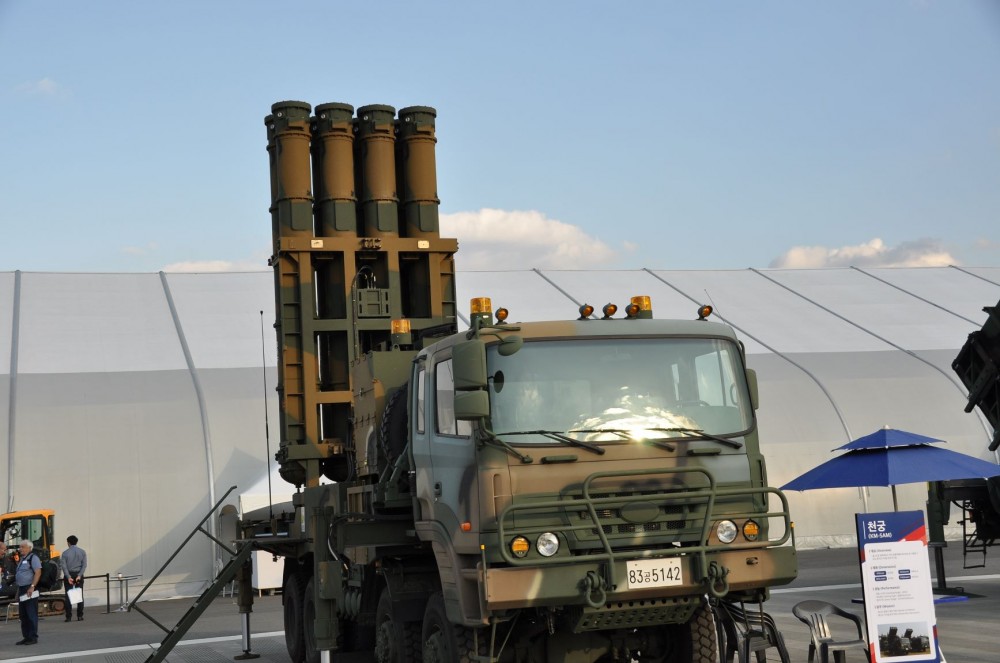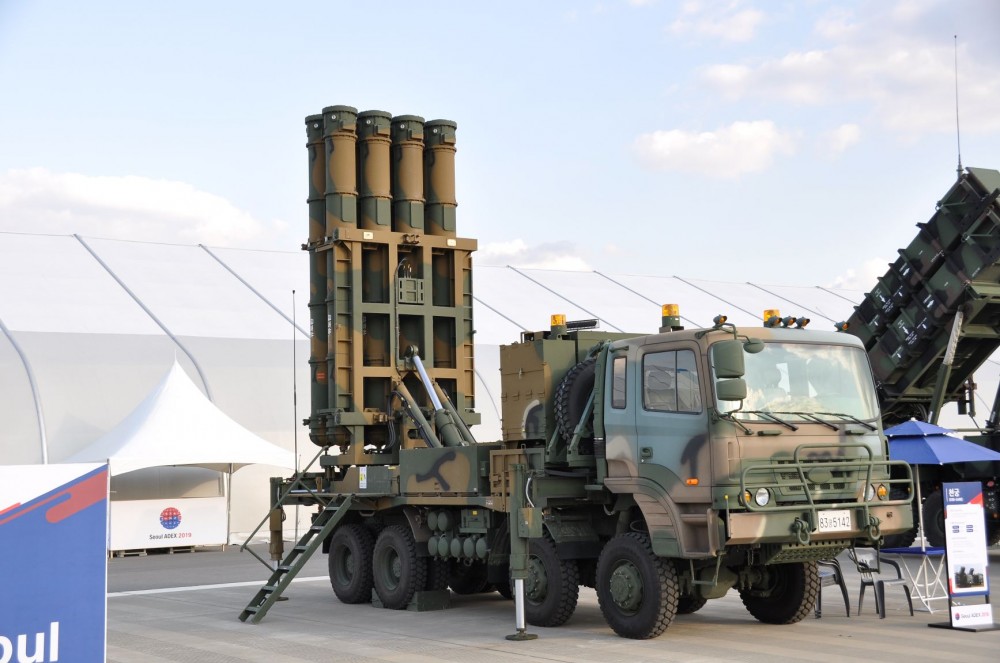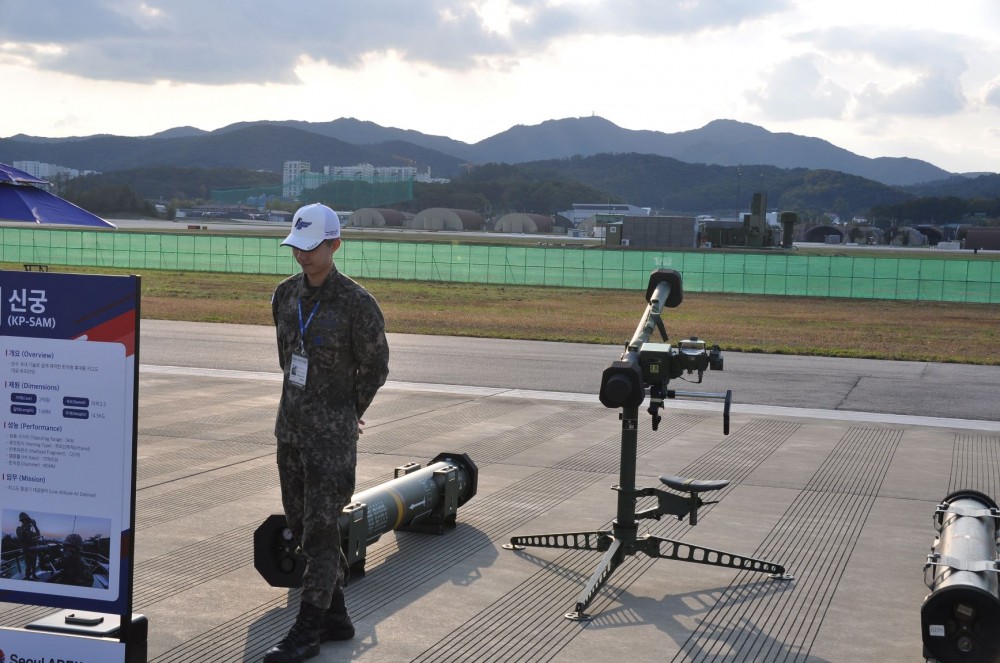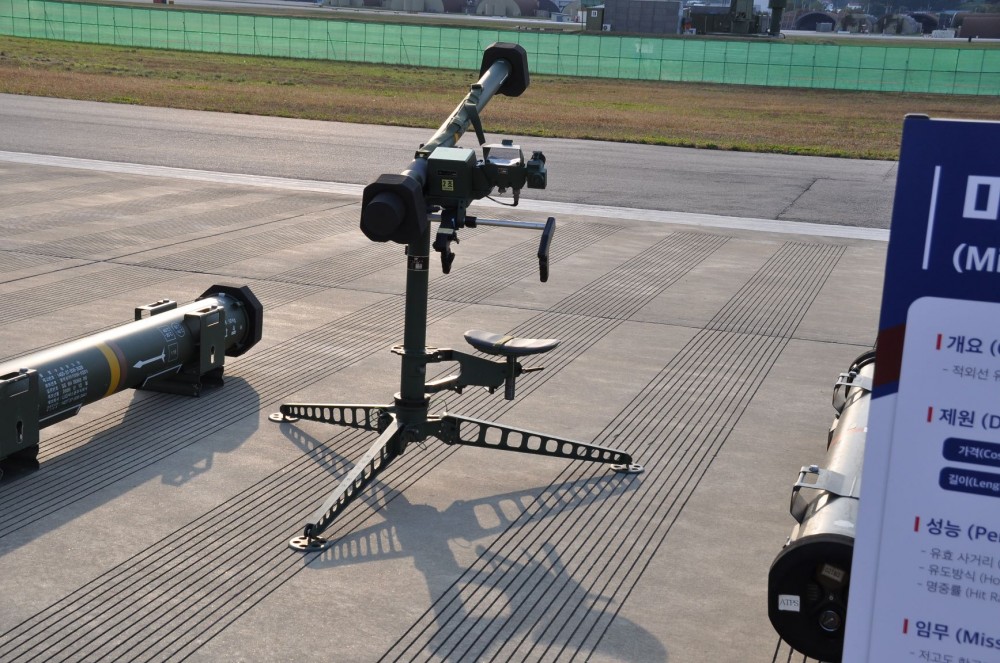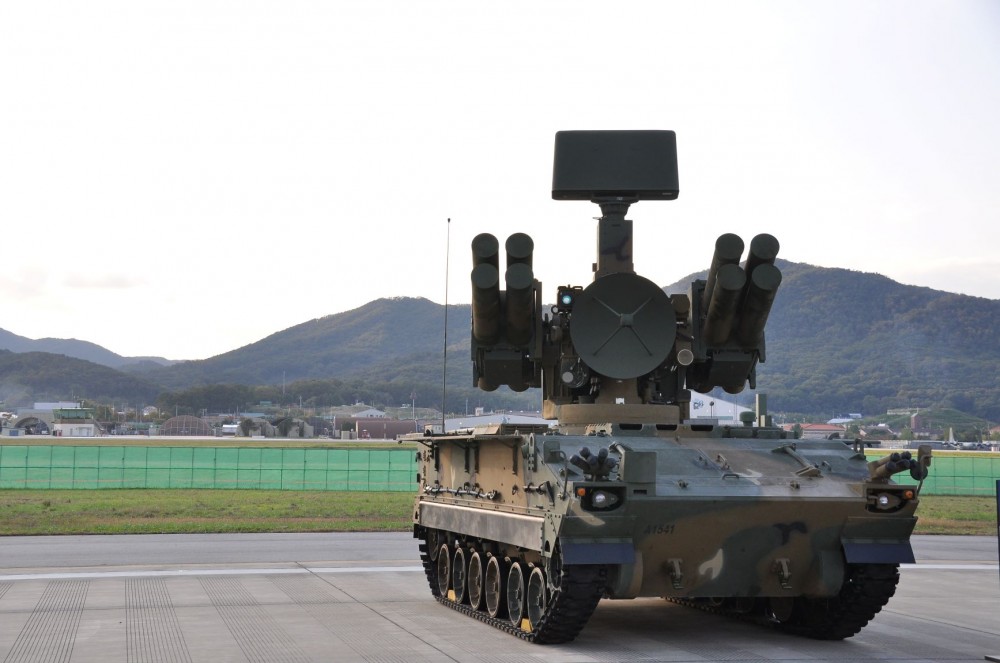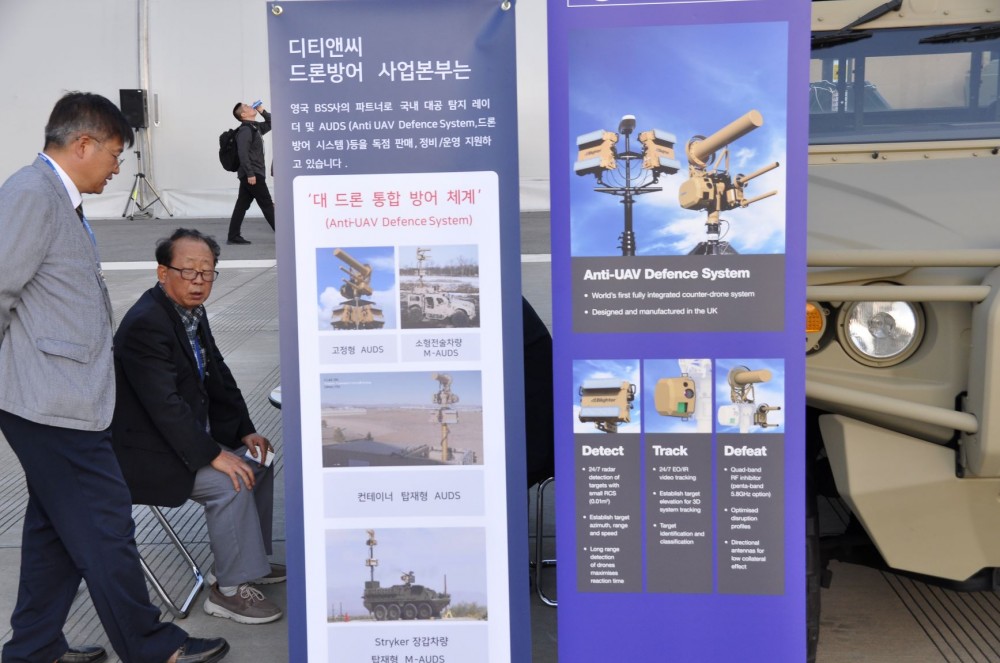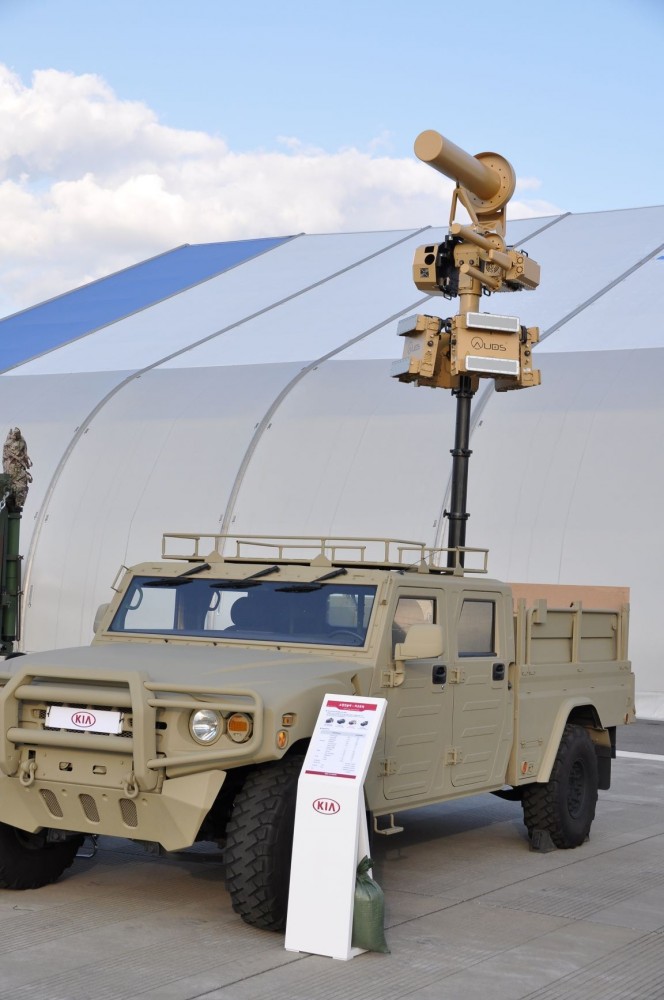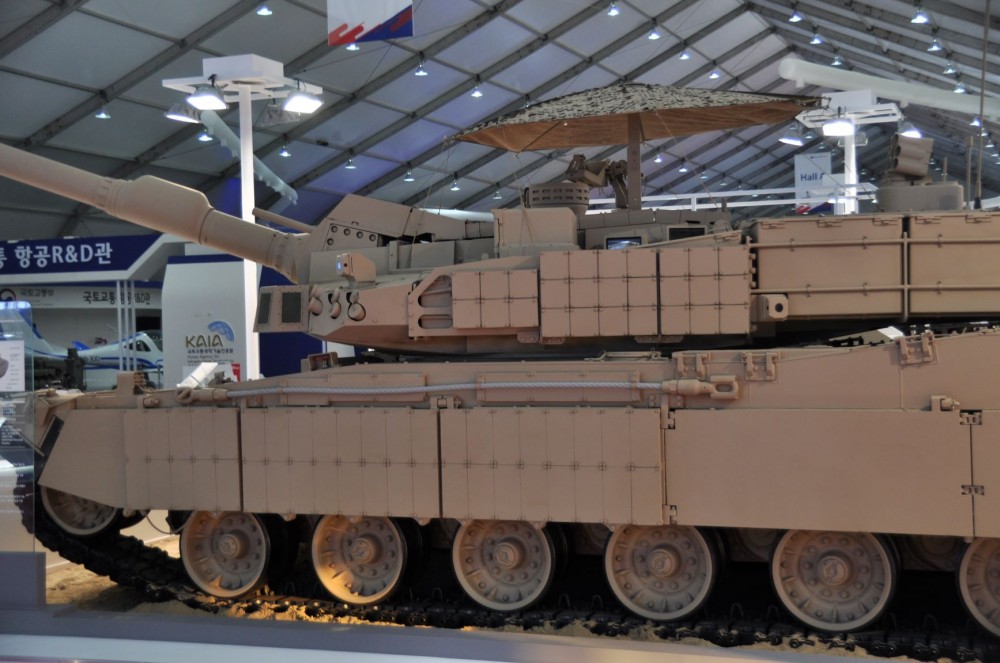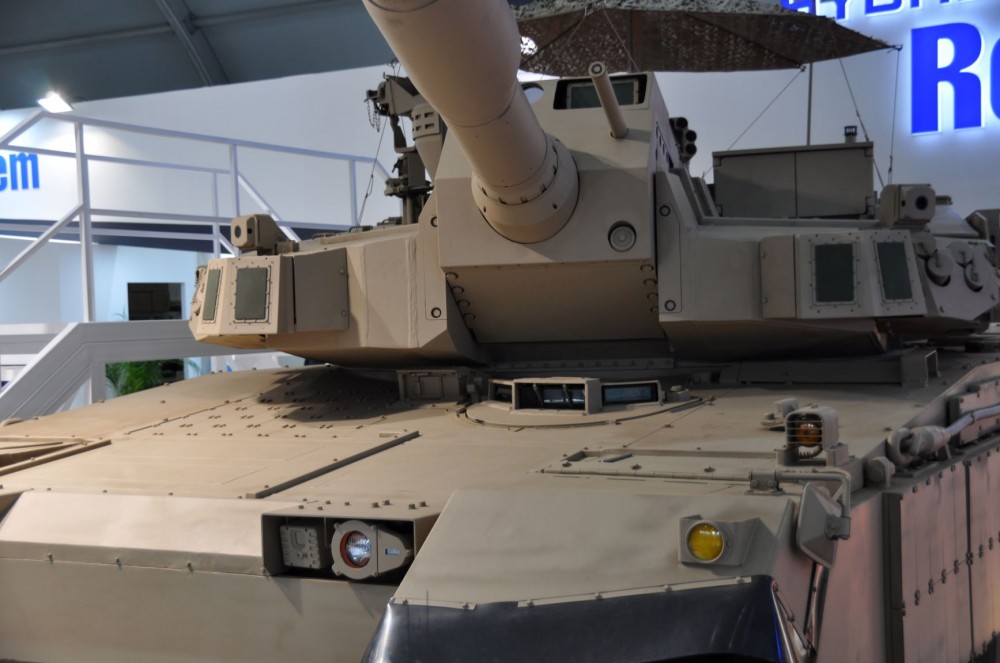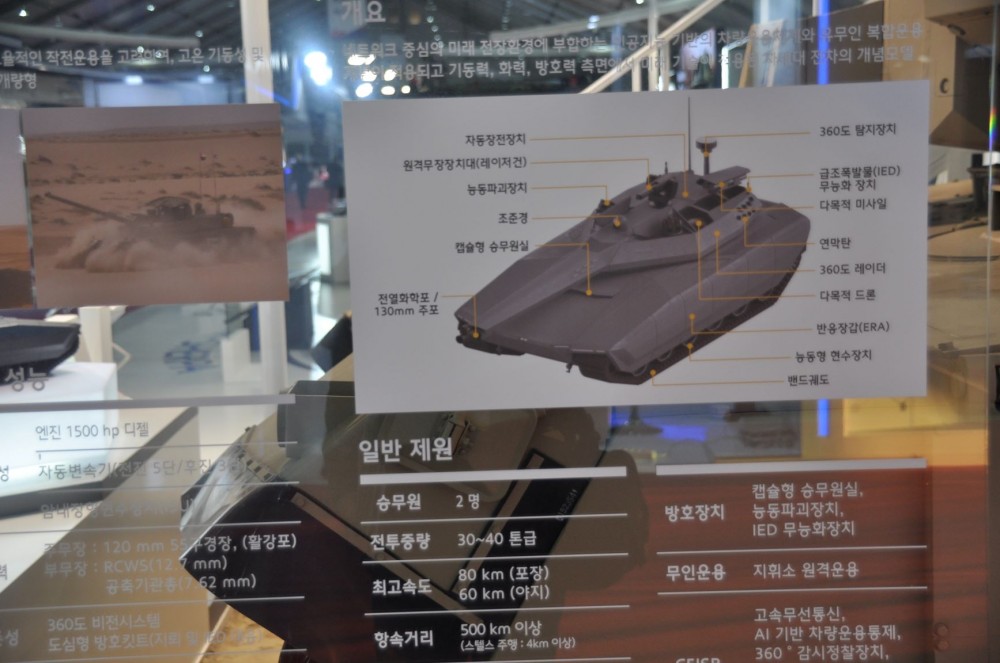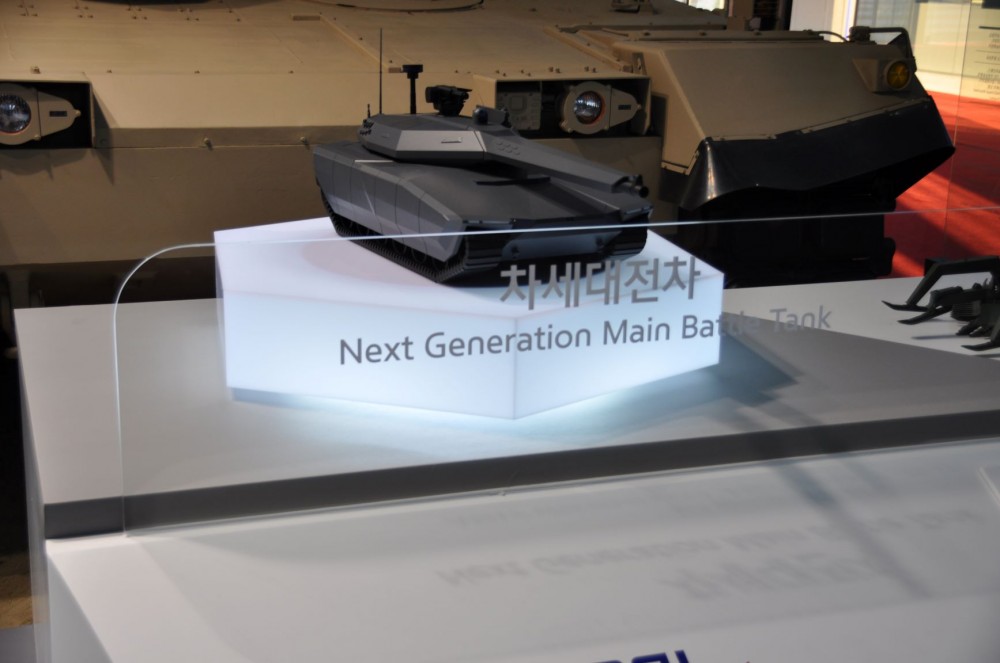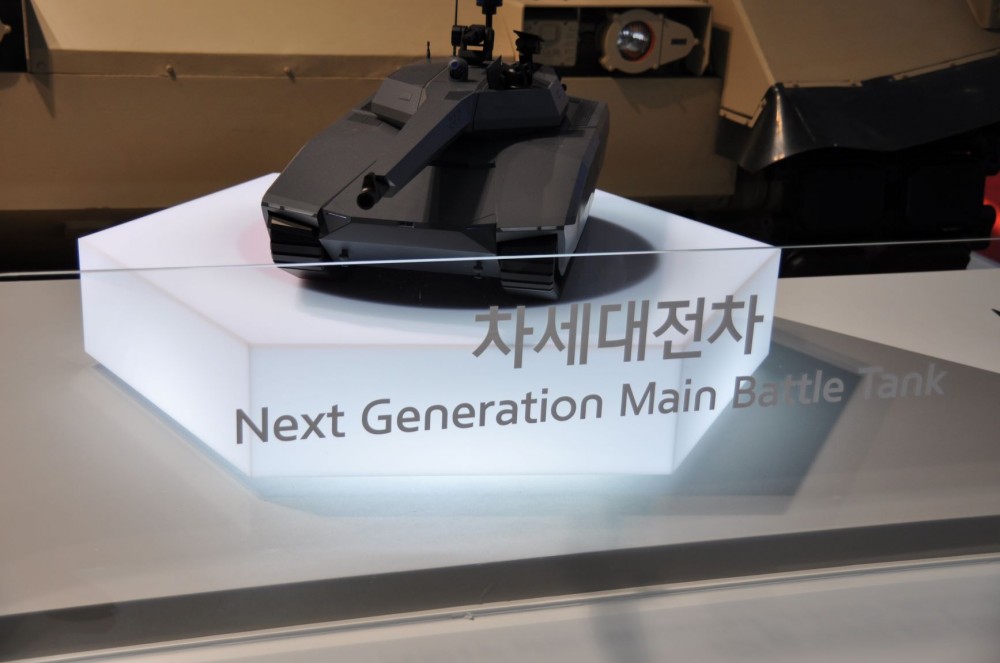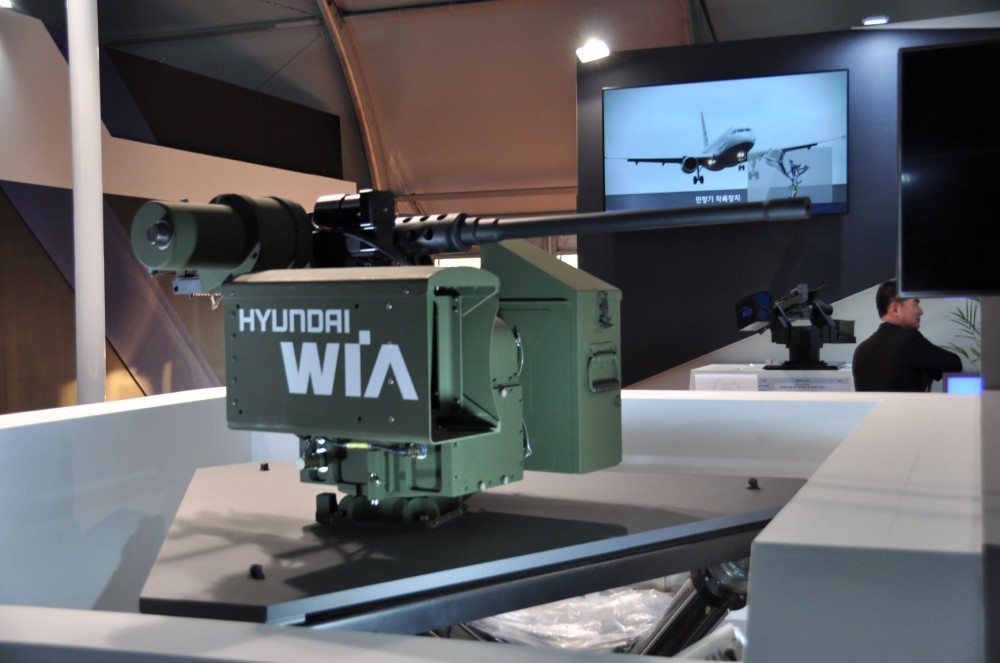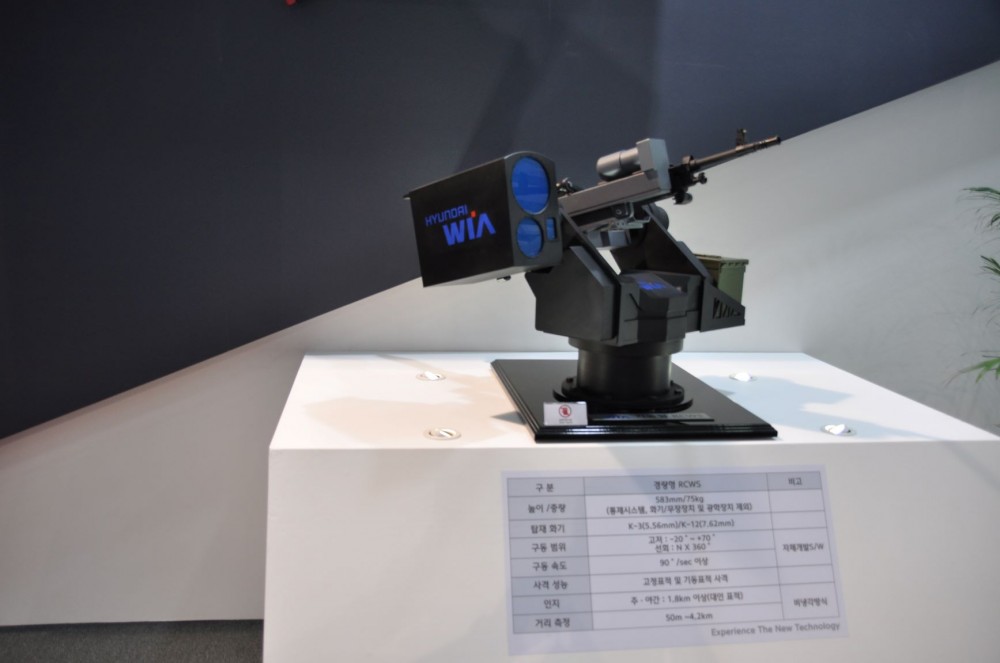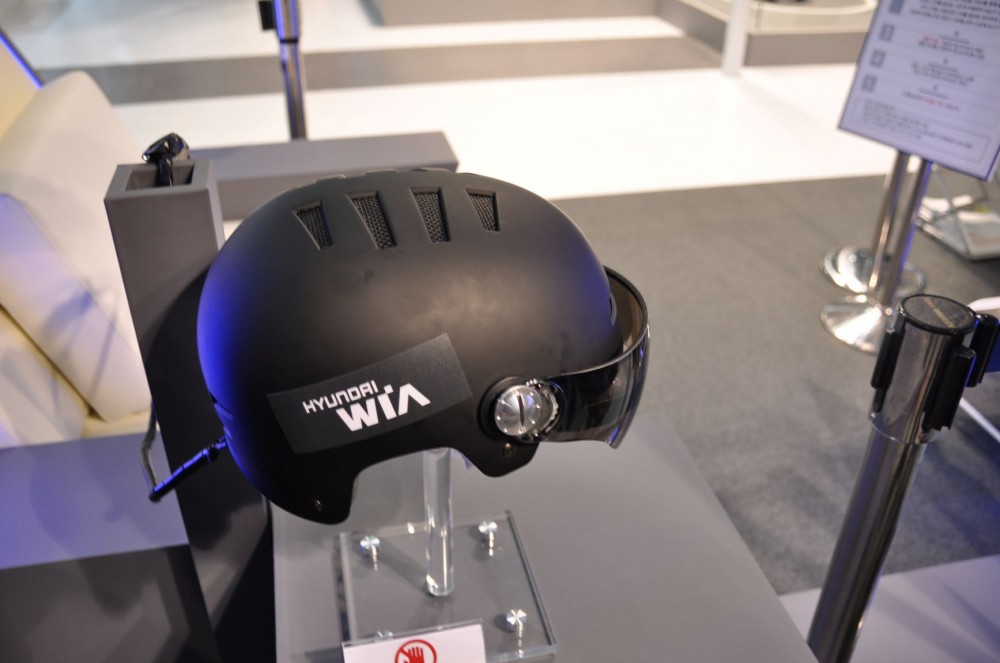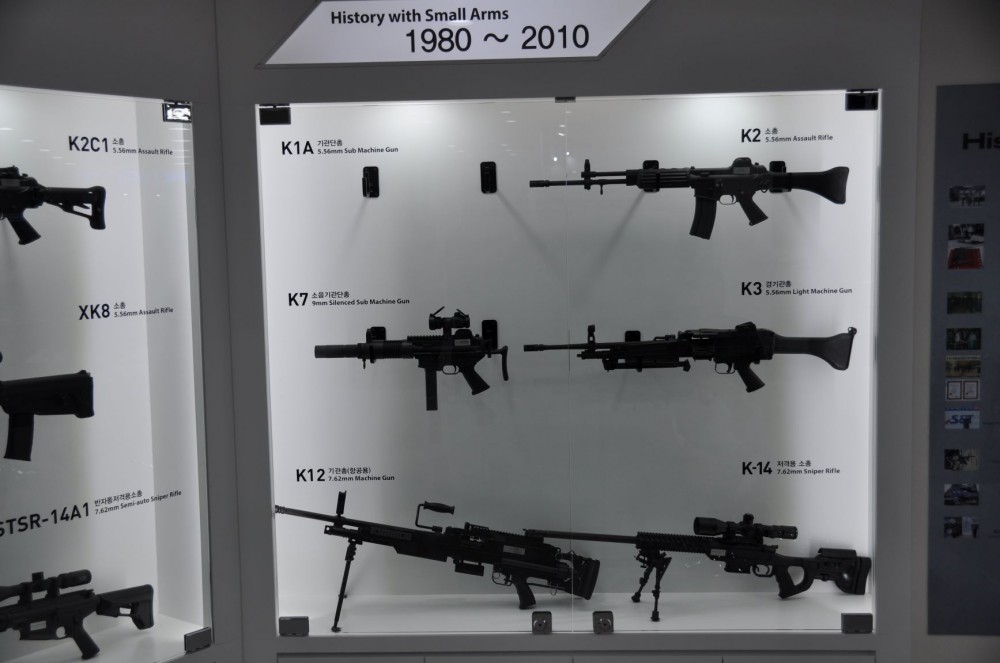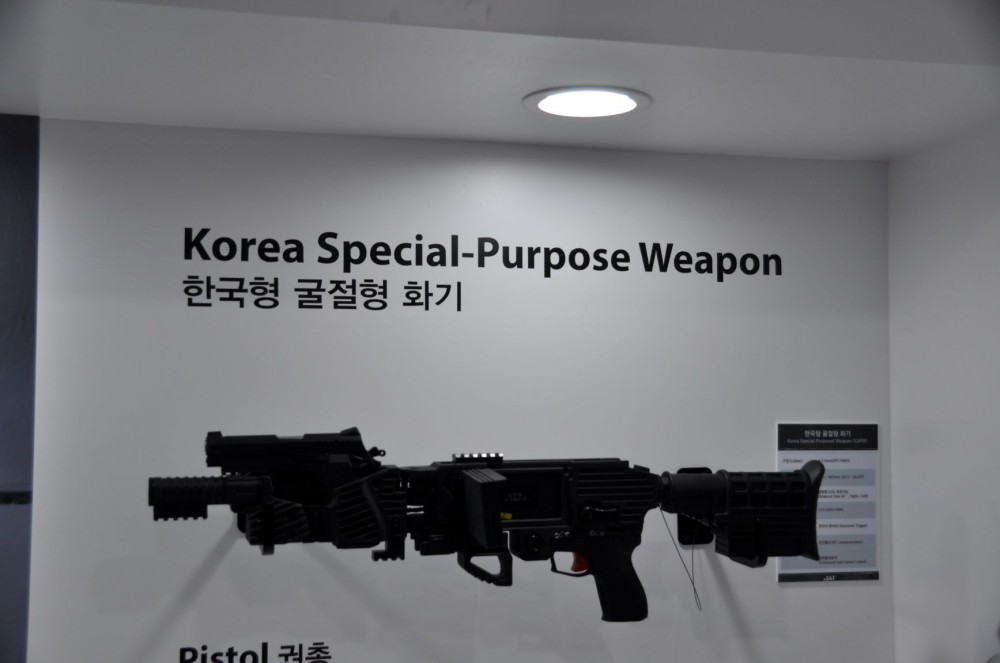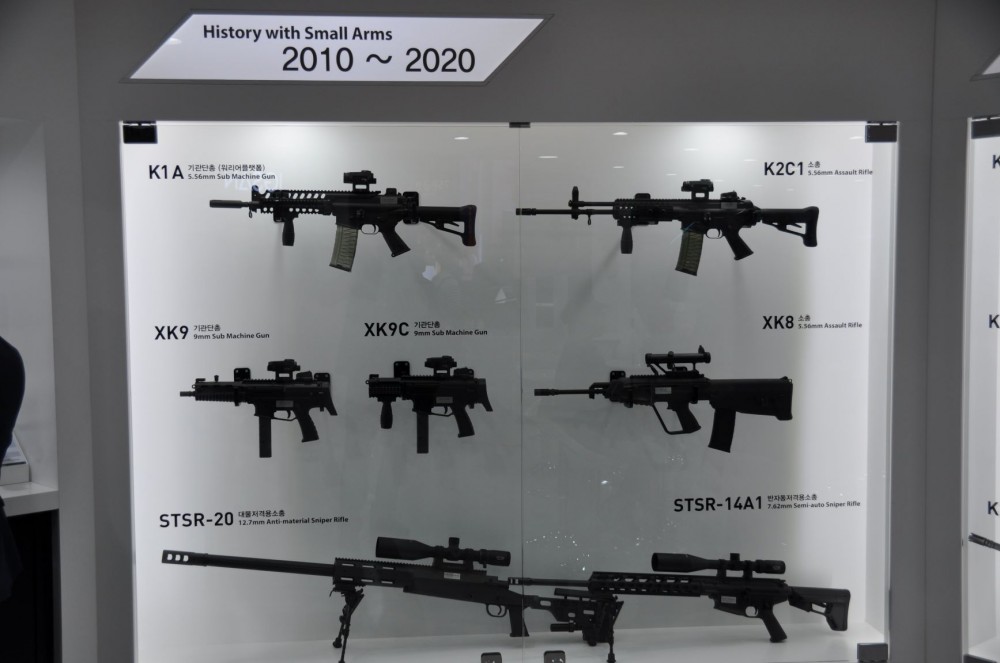Between October 15th and 20th 2019, South Korea held its Seoul International Aerospace & Defense Exhibition (ADEX) 2019. The exhibition itself showed South Korea’s ambition: to become a leading supplier of high-tech weaponry on a global scale.
South Korea revealed a wide range of weapons, including the 30-mm twin AAGW self-propelled anti-aircraft mount on the chassis of the new Hyundai Rotem K808 armored personnel carrier with an 8×8 wheel arrangement.
Two 30-mm KKCB automatic guns are installed in the rotating tower, which are a licensed version of the 30-mm Rheinmetall Air Defense (Oerlikon) KCB gun manufactured by the South Korean S&T group. The guns are installed in separate installations with separate power supply and vertical guidance.
Another weapon is the launcher of the South Korean medium-range anti-aircraft missile system KM-SAM (Cheongung, formerly designated as Cheolmae-2), developed with the active assistance of the Russian Almaz-Antey Concern JSC. The Russian side was responsible for creating a multifunctional Radar and command post of the complex, as well as anti-aircraft guided missiles (made on the basis of 9M96 series missiles). The complex has been in serial production since 2015.
An interesting new piece of equipment is the new man-portable air defense system Chiron, manufactured by LIG Nex1 (part of the LG group) and developed with the participation of Russian developers under the relevant 2003 agreement.
Following is the Chun Ma, self-propelled short-range self-propelled anti-aircraft missile system. The complex was manufactured by Doosan Infracore (now part of Hanwha Corporation) and has been in development since 1999 and was created with the participation of the Thales group using a modified VT-1 licensed rocket of the French Crotale NG.
KIA also presented light armored vehicle, the KLTV, equipped with the famous AUDS (Anti-UAV Defense System), developed by a consortium of small British companies consisting of Blighter Surveillance Systems, Chess Dynamics and Enterprise Control Systems.
Hyundai Rotem presented the export version of its new K2 battle tank.
Hyundai Rotem also presented its concept for its future main battle tank, featuring a weight of 30-40 tons, a crew of two people, weapons in the form of a promising 130-mm gun and missile systems.
Another Hyundai company, Hyundai WIA unveiled its remote-controlled light machine gun combat module. It is reportedly controlled through a helmet.
Other weapons that were shown included various naval guns, mortar launchers, 30mm automatic guns and others. A variety of small arms were also presented.
All in all, the line up was quite impressive and rich, and it does really stand to show the ambition of South Korea in the weapons market.
In recent years, data shows that South Korean weapon sales are steadily increasing.
In 2017, Korea’s total export of defense products was about $3.1 billion, more than triple the export value in 2010. Korea is becoming an active player and one of the top countries in the Asia in defense exports.
Korea not only increased its exports regionally, but also managed to export at a global level by expanding to Europe and South America. Korea exported to 83 countries in 2017 with 132 exporting companies.
Following is a list of major defense exports of South Korea from 2013 – 2018:
- 6 patrol corvettes to Malaysia ($1.2 billion);
- 12 FA-50 (Light combat aircraft) to Philippines ($420 million); FA-50 is co-developed with Lockheed Martin;
- 16 T-50s (advanced trainer) to Indonesia ($4 billion); T-50 is co-developed with Lockheed Martin
- 12 T-50s to Thailand ($110 million);
- Military vehicles to Philippines ($345 million);
- K-9 Thunder (self-propelled howitzer) to India (100), Turkey (280), Finland (48), Norway (24), and Poland (120).
Between 2013-2017 South Korea was the 12th largest arms exporter in the world. Its most significant export is the K-9 Thunder self-propelled howitzer.
In 2018, the country made a significant jump, ranking 6th in the world, accounting for 3.8% of global arms sales.
The infographic provides insight into the position of Seoul on the global weapons market.
The effectiveness of the K-9 Thunder was testified by its export to Turkey, which paid $1.6 million in licensing fees per unit to produce 300 of these howitzers under the model name T-155 Firtina.
In 2018, India decided to buy 104 Biho systems, along with 4,928 missiles and 170,000 rounds of ammunition at a price of 3 trillion won (approx. $2.5 billion), choosing the weapon over the Russian-made Tunguska and Pantsir systems.
U.S.-based Lockheed Martin’s annual defense revenue ranges somewhere between $41 and 44.9 billion, while Britain’s BAE Systems makes around $23 billion each year. By contrast, KAI, the country’s largest arms maker, only makes around $1.7 billion, while LIG Nex1 and Hanwha make $1.6 and $1.2 billion respectively.
“We must look toward niche markets like those for armored equipment and short- to mid-range missiles while stressing our price competitiveness and avoiding markets like high performance aircraft, which are already dominated by the leading firms,” said Eom Hyo-sik, an executive at Hanwha Defense. “In the future, we will inevitably come into fierce competition with China.”
Western firms dominate the international market for cutting edge military aircraft, tanks and Aegis-equipped destroyers. South Korea, for its part, relies on countries like Indonesia, Iraq or the Philippines to buy its arms, yet more often than not, these countries do not have the purchasing power to make large buys, and the purchases they do make are frequently affected by domestic political developments.
The fact that the country is still technically at war, furthermore, shows that its weapons have been “verified” on the battlefield.
South Korea’s advanced naval manufacturing sector also allows it to produce a variety of warships that are in demand abroad.
Thailand bought a 3,650-ton Daegu-class frigate last year at 52 billion won (approx. $44 million) the biggest single arms purchase in the country’s history, which is set to serve as the flagship of its fleet. The Philippines also bought two 2,870-ton frigates for 37 billion won (approx. $31 million).
Daewoo Shipbuilding & Marine Engineering, or DSME, one of South Korea’s leading shipbuilding firms, also built Norway’s largest warship.
South Korean made submarines also have a good reputation abroad, with the Chang Bogo-class submarines serving a key role in Indonesia’s maritime fleet.
In 2011, Jakarta bought three of these vessels weighing in at 1,400 tons each and ordered three more in April 2018 from DSME at a price of 1.16 trillion won (approx. $1 billion). These sales have made South Korea the fifth-largest submarine exporter in the world.
Japan is a state in the same region that is also attempting to expand its weapon manufacturing and exporting business. Quite apparently, judging by recent South Korean performance on the global scale, it is losing in that field, to the detriment of Tokyo.
Another point of view, a rather hypothetical one would be that if North and South Korea manage to achieve peace and reunify, then that would be the likely advent of a new South Asian super state, which would quite possibly be on its sure and merry way of becoming a global power.
Since Seoul and Pyongyang both have something invaluable to offer in the case of a possible reunification. Seoul would provide its technology, while Pyongyang would provide the much needed manpower and strong cultural identity – the abiltiy to resist to outside influence and preparedness to sacrifice life for a better future. The readiness to defend the homeland is present for both the South and North, but it is much more enhanced under the leadership of Kim Jong-un and his predecessors. It will also be a large country, with a large population that also has very adequate missile and nuclear weapons technology.
If that were to happen, Japan as a competitor wouldn’t even need mentioning, since the unified Korea would likely be able to compete even with China.
MORE ON THE TOPIC:



